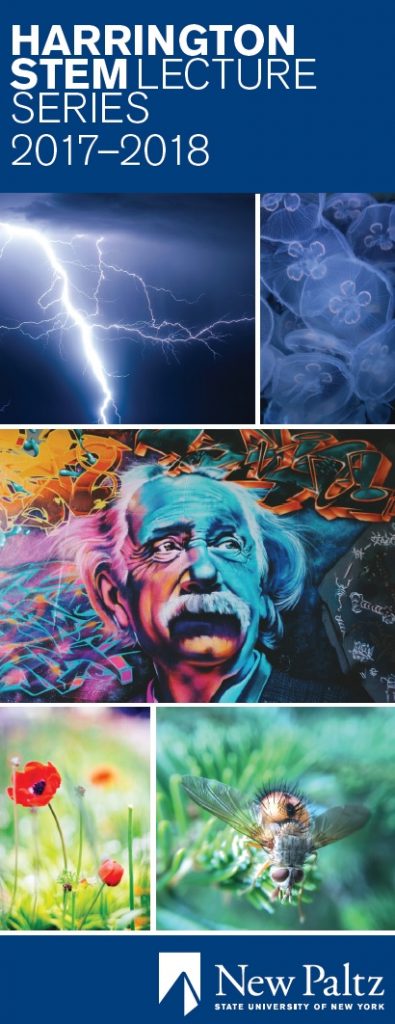 The School of Science & Engineering at SUNY New Paltz sponsors an annual series of lectures on the most pressing questions and cutting-edge advances in science, technology, engineering and math (STEM).
The School of Science & Engineering at SUNY New Paltz sponsors an annual series of lectures on the most pressing questions and cutting-edge advances in science, technology, engineering and math (STEM).
Three esteemed scholars will appear on campus this fall to share their latest research and ideas for future inquiry. All the lectures are prepared with a general audience in mind, and are free and open to the public.
Harrington STEM Lectures are held in the Coykendall Science Building Auditorium on the New Paltz campus, and are free and open to the public. All lectures begin at 5 p.m.
Each evening’s program includes a reception prior to the lecture to encourage conversation between guest lecturers and our students, faculty, staff and community members. Lectures are video recorded and archived, and past lectures can be viewed on the Harrington STEM Lecture Series website.
Tuesday, Sept. 19, 5 p.m.
“Quantitative Modeling for All”
David Ferguson, Distinguished Service Professor of Technology and Society and Applied Mathematics and Statistics, Stony Brook University
Abstract: One of the more powerful ways to understand some aspect of the “real world” is to build models of some part of that reality. Such models – ranging from readability formulas to approaches to understanding climate change – can be amazing tools for understanding and predicting phenomena. In this presentation, we will use a variety of examples, drawn from everyday life, risk assessment, estimation of the sizes of populations, medical tests, and old and new decision problems. Attendees will be invited to engage in helping solve these kinds of problems, and will come away from this talk better able to understand the power and limitations of modeling.
Thursday, Oct. 5, 5 p.m.
“The Critical Role of Trees in the Flux of Water Through the Earth’s Permeable Skin”
Kamini Singha, Professor, Department of Geology and Geological Engineering and Associate Director of the Hydrologic Science and Engineering Program, Colorado School of Mines
Abstract: Earth’s “critical zone” – the zone of the planet from treetops to base of groundwater – is critical because it is a sensitive region, open to impacts from human activities, while providing water necessary for human consumption and food production. Quantifying water movement in the subsurface is critical to predicting how water-driven critical zone processes respond to changes in climate and human perturbation of the natural system. While shallow soils and aboveground parts of the critical zone can be easy to instrument and explore, the deeper parts of the critical zone – through the soils and into rock – are harder to access, leaving many open questions about the role of water in this environment.
Thursday, Nov. 7, 5 p.m.
“Smart Devices in Sport”
Kim Blair, Founder, Science Technology and Engineering @ MIT (STE@M), Massachusetts Institute of Technology
Abstract: Advances in sensor technology, data analysis algorithms, and wireless communication have resulted in everything around us becoming “smart.” Sports equipment is no exception. Over the past couple of decades, there have been a plethora of products coming to market that provide information and feedback to a user. These products include sports equipment, wearable devices, and smart environments. In this presentation, we will take a look back at the past 20 years of developments in this field, the reasons for the current growth in the number of smart sports products coming to the market place, and a look into the current challenges in launching successful products or businesses based around smart devices.
About the Harrington STEM Lecture Series
The School of Science & Engineering colloquium series is named for John Harrington, the School’s founding Dean and a dedicated adherent of science, education and collaboration across the STEM disciplines.

